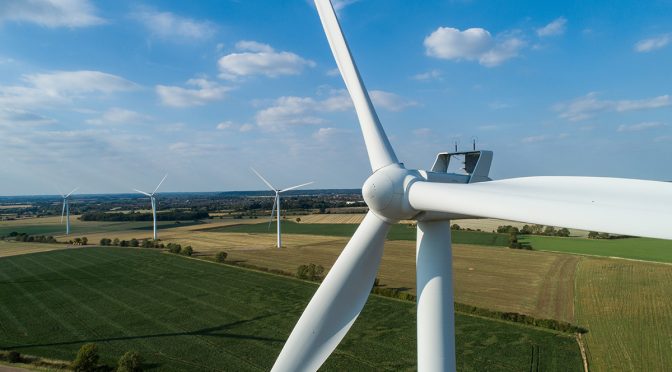
The global push for clean, renewable energy has led to a significant increase in the number of wind farms being constructed around the world. As a result, advances in turbine technology have become a focal point for researchers and engineers seeking to boost the efficiency of these installations. With the latest innovations in design, materials, and control systems, wind farms are now capable of generating more power than ever before, while also reducing their environmental impact.
One of the most significant advances in turbine technology has been the development of larger, more efficient rotor blades. These blades are designed to capture more wind energy, allowing the turbine to generate more power. In recent years, the size of rotor blades has increased dramatically, with some now measuring over 100 meters in length. This increase in size has led to a corresponding increase in power output, with some of the largest turbines now capable of generating up to 12 megawatts (MW) of electricity.
In addition to larger rotor blades, advances in materials science have also played a crucial role in improving turbine efficiency. Traditionally, wind turbine blades have been constructed from fiberglass, which is both lightweight and strong. However, researchers have been exploring the use of alternative materials, such as carbon fiber and advanced composites, which offer even greater strength and durability. These materials not only allow for the construction of larger, more efficient blades, but also help to reduce the overall weight of the turbine, which in turn reduces the amount of energy required to rotate the blades and generate power.
Another area of innovation in turbine technology is the development of advanced control systems. These systems use sophisticated algorithms and sensors to monitor the performance of the turbine in real-time, adjusting the angle of the blades and the rotation speed of the rotor to optimize power generation. By constantly monitoring and adjusting the performance of the turbine, these control systems can help to ensure that the wind farm operates at peak efficiency, even in variable wind conditions.
Furthermore, advances in turbine technology have also led to the development of more efficient drive systems. Traditional wind turbines use a gearbox to convert the low-speed rotation of the rotor into the high-speed rotation required to generate electricity. However, gearboxes can be prone to mechanical failure and require regular maintenance, which can be both costly and time-consuming. To address this issue, engineers have developed direct-drive turbines, which eliminate the need for a gearbox by connecting the rotor directly to the generator. This not only reduces the number of moving parts within the turbine, but also increases efficiency by reducing energy losses associated with mechanical friction.
Finally, improvements in wind farm design and layout have also contributed to increased efficiency. By carefully analyzing wind patterns and topography, engineers can optimize the placement of individual turbines within a wind farm to maximize energy capture. Additionally, the use of advanced software tools allows for the modeling of wind farm performance under a variety of conditions, enabling designers to fine-tune their layouts to ensure optimal power generation.
In conclusion, advances in turbine technology have played a crucial role in boosting the efficiency of wind farms around the world. From larger rotor blades and advanced materials to sophisticated control systems and improved drive systems, these innovations have enabled wind farms to generate more power than ever before, while also reducing their environmental impact. As the demand for clean, renewable energy continues to grow, it is likely that we will see even more advances in turbine technology in the coming years, further enhancing the efficiency and sustainability of wind power.